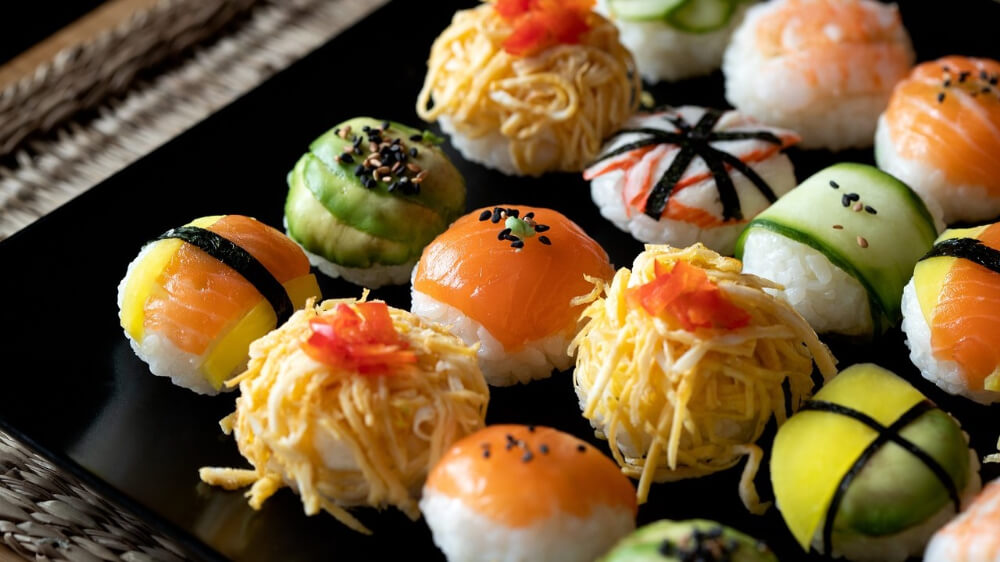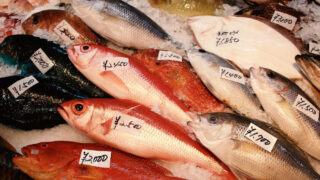In Japan, there’s an abundance of sushi varieties rarely found elsewhere. By learning Japanese related to sushi, your sushi experience will become even more enjoyable. If you’ve come all the way to Japan, why not challenge yourself with sushi you’ve never tried before?
This article not only introduces you to sushi names in Japanese but also explores the diverse types and flavors of sushi that are difficult to find outside of Japan.
If you’re looking to learn fish names instead of sushi name, check out the article below.
Basic Knowledge of Sushi
Types of Sushi in Japan
Sushi can be categorised into several types based on preparation methods and serving styles, each with its own name. Each type of sushi has its own unique appearance and texture, with suitable and unsuitable cooking methods varying depending on the type of fish. This depth adds to the richness of the sushi experience. Here, we introduce representative types of sushi.
Nigiri Sushi
This type of sushi is probably the first thing that comes to mind when sushi is mentioned. It is made by placing toppings on vinegared rice and shaping it by hand. Various types of fish are served as nigiri sushi.
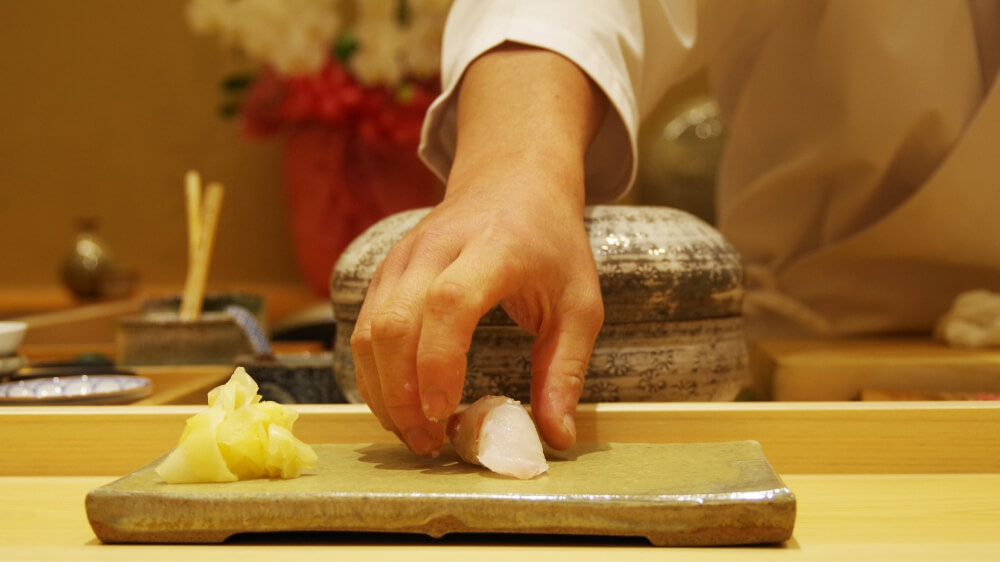
Gunkan Sushi
These are boat-shaped sushi with ingredients on top of rice wrapped in nori (seaweed). Toppings that may spill over such as ikura (salmon roe), negitoro (minced tuna with scallions), and sea urchin are often served in this form.
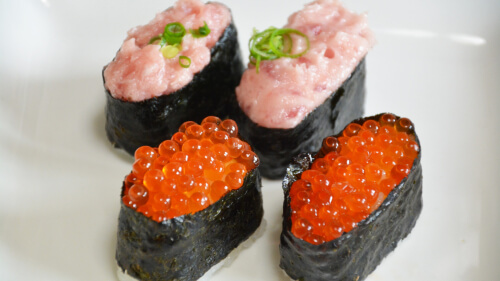
Maki Sushi
Sushi made by rolling vinegared rice and ingredients in nori. This style is also can be seen at home parties. Ingredients include tuna, cucumber, and the popular California roll among foreigners.
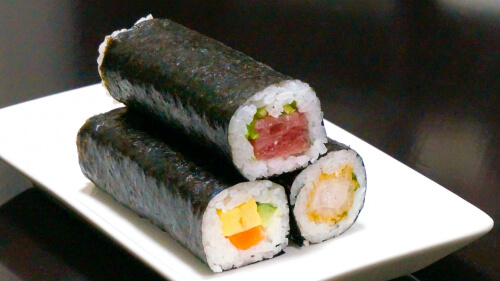
Chirashi Sushi
Sushi made by scattering various seafood, vegetables, and eggs on top of vinegared rice. It’s visually appealing and commonly seen at events and Japanese restaurants’ menus.

Sashimi
While not technically sushi as it refers to raw fish itself, it’s possible to order sashimi separately at sushi restaurants. Many people enjoy sashimi alongside Japanese sake.

Aburi Sushi
A type of nigiri sushi where the topping is lightly grilled by barnners. This cooking method is often used for fatty fish like salmon, as well as fish with delicious skin such as red sea bream and blackthroat sea perch.

The word “Sushi” can often change its pronunciation from “sushi” to “zushi” when combined with other words like “nigiri” or “chirashi“.
e.g. nigiri sushi → nigiri zushi
Classification of Fish
The fish used in sushi are divided into several categories, each with its own characteristics in terms of taste and nutrients. Here, we explain commonly used classifications in the sushi industry.
Akami
Many Fish in this category have a reddish color, and are often rich in flavor and fat. While they contain many nutrients like iron and vitamins, some people may find the odor of blood off-putting. Common examples include maguro (tuna), katsuo (bonito), and buri (yellowtail).
Shiromi
Fish often have white flesh, which is typically low in fat and calories. They offer a gentle and delicate flavor appreciated regardless of season or age. Representative fish in this category include tai (red sea bream) and hirame (flounder), while salmon, known for its richness in fat, exceptinally belongs to this group.
Hikarimono
A unique classification in the sushi industry, referring to small, shiny fish. Rich in omega-3, they are often pickled in vinegar or served with condiments because they can spoil easily. Popular examples include sanma (Pacific saury), saba (mackerel), and aji (horse mackerel).
Sushi Names in Japanese and Taste
Classic Sushi
The sushi listed below can possibly be found in sushi restaurants outside of Japan and are relatively recommended for sushi beginners.
Maguro ‐ Tuna
The most popular sushi both in Japan and overseas. Depending on the fat content, it’s categorised as otoro (fatty tuna), chutoro (medium fatty tuna), or akami (lean tuna). There’s a wide variety of tuna species we eat in Japan, and bluefin tuna is the most prized for its taste.
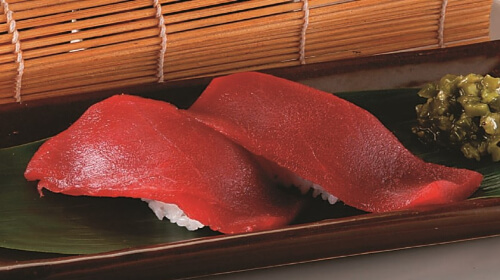
Negitoro – Minced tuna
Minced tuna mixed with finely chopped scallions. It’s usually served as gunkan sushi. The smooth texture and sweetness of the fat are particularly beloved by children. It’s a common ingredient in dishes like seafood bowls.
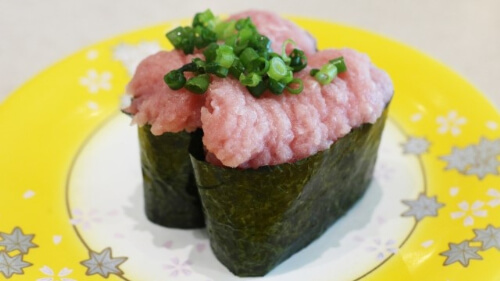
Salmon
It provides a sensation of melting in the mouth and is a popular choice among sushi enthusiasts worldwide. It can be prepared in various ways, including nigiri sushi, sashimi, or in chirashi sushi.
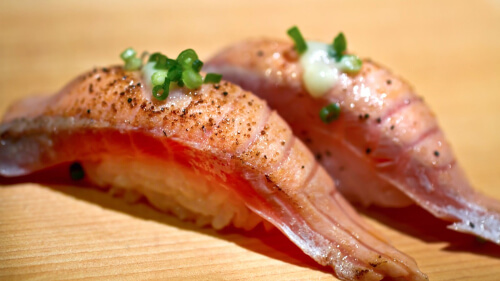
Uni – sea urchin
A sushi for connoisseurs, known for its delicate bitterness and richness. Prices vary depending on the type of sea urchin, ranging from 100 to 200 yen per piece at budget restaurants, while at high-end sushi restaurants, it can exceed 3,000 yen.

Ebi ‐ prawn
There is a wide variety available, including amaebi (sweet shrimp), which is often served raw; boiled vannamei ebi (king prawn), commonly found in budget restaurants; and kurumaebi (Japanese Tiger Prawn) often served in high-end restaurants. Its firm texture and sweet flavor make it popular among both children and adults.
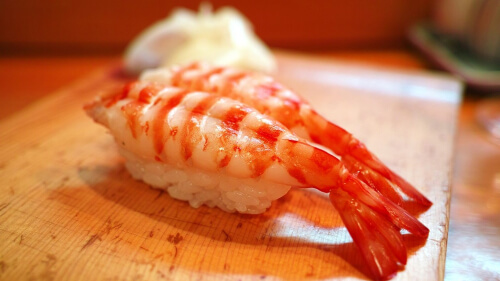
Ikura – Salmon roe
Salmon roe marinated in soy sauce, offering a delightful popping texture and enjoyed by both Japanese and foreigners. Available for as low as 100 yen per piece at budget sushi restaurants, it’s a common topping for seafood bowls.
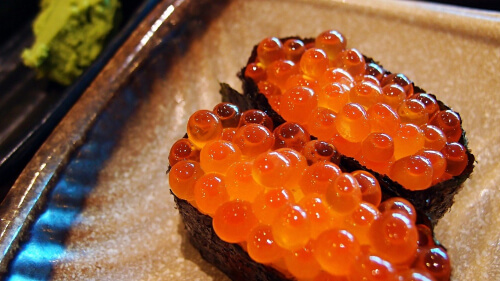
Anago – conger eel
Although visually similar to unagi (freshwater eel), anago has a lighter taste and is favored for sushi. It’s typically served in Kanto-style as tender simmered anago with sweet soy sauce or in Kansai-style as grilled anago.
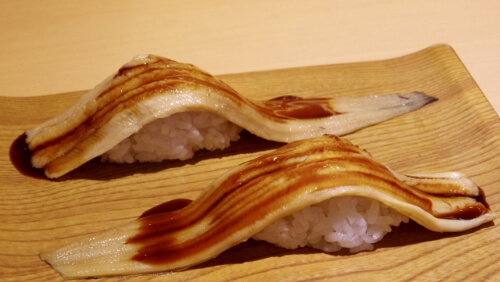
Tako – octopus
Boiled or row octopus served as nigiri sushi is common in Japan. Its unique chewy texture and the release of flavor as you chew make it a popular choice. In addition to sushi, tako is enjoyed year-round in various dishes like sashimi, tempura, and takoyaki.
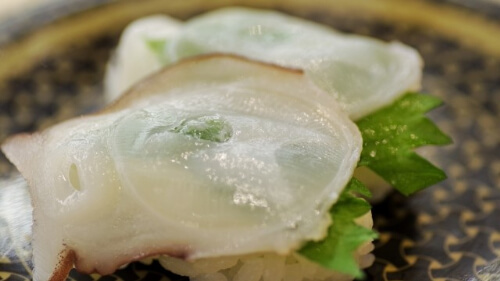
Ika – squid
Known for its unique texture and slight sweetness. There are also many varieties of squid available, including the affordable maika (surume squid), the tender and sweet aoriika (bigfin reef squid), and especially delicious when eaten raw yariika (spear squid), each offering distinct flavors and textures.
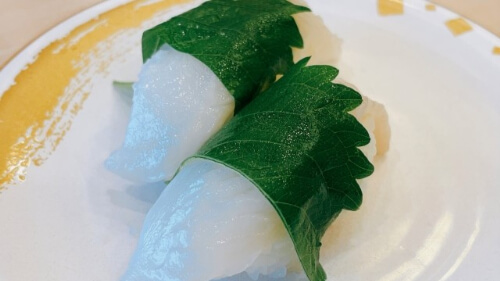
Tai – red sea bream
Referred to as the king of white fish, tai is prized for its delicious taste whether cooked, grilled, or served raw. Some sushi restaurants offer it been blanched or seared, allowing you to enjoy the skin as well.
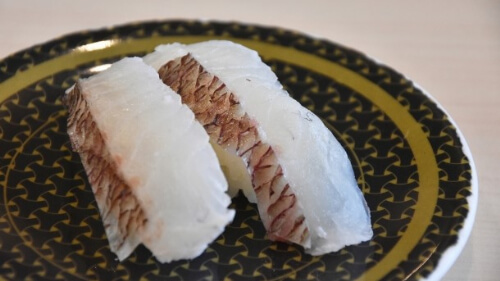
Aji – horse mackerel
While some foreigners are not fond of due to its strong taste, fresh aji contains abundant umami compounds and nutrients within its moderate fat content, making it exceptionally tasty.

Tamago – egg
A sushi composed of sweetened, fluffy omelet on vinegred rice wrapped in nori, is also popular especially among children. The harmony between the savory dashi and sweetened egg makes it a worth-try dish.
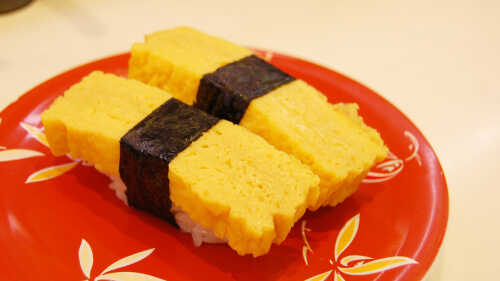
Hotate – scallop
Scallops are known for their strong sweetness and creamy texture. You can enjoy them as nigiri sushi, seared scallops, or in seafood bowls. In budget sushi restaurants, they’re usually priced around 200 yen per piece.
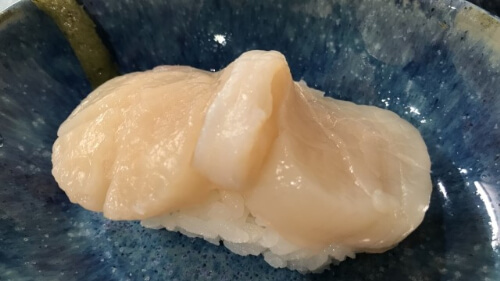
Kappa Maki
A simple sushi roll made with cucumber and vinegared rice, perfect as a palate cleanser. It’s common for Japanese to end their meals with a kappa maki.

California Roll
Originating from the United States, this sushi includes ingredients like seafood, avocado, and mayonnaise rolled with rice. It has become a staple menu item even in Japan, particularly popular among children.

Sushi Rarely Seen Overseas
Some sushi ingredients commonly found in Japan might be rare or unavailable in sushi restaurants abroad. If you’re in Japan, seize the opportunity to try sushi that’s unique to the country. An unexpected food might surprise and impressed you!
Hamachi / Buri – yellowtail
When “Hamachi” matures, it is called “buri“, gaining more fat, resulting in a richer flavor. Hamachi is in season from summer to autumn, while buri tastes better in winter. While it may possess a rich flavor, it remains easy to eat.
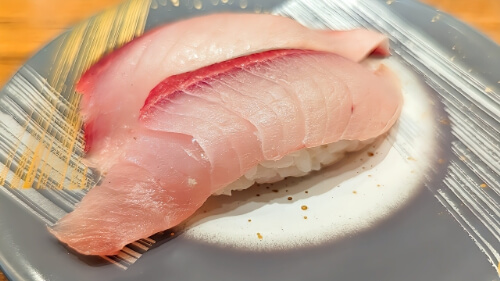
Hirame – flounder
A highly prized premium white fish with a delicate flavor that becomes more pronounced as you chew. It is sometimes served marinated in kombu seaweed, which enhances its umami flavor and pairs perfectly with Japanese sake.
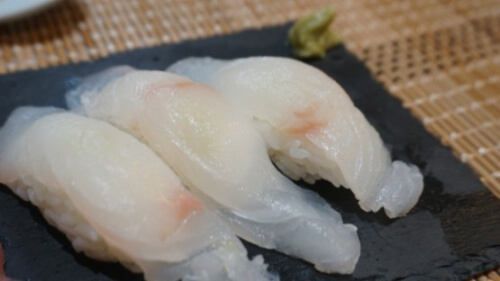
Katsuo – bonito
Katsuo has two seasons: spring bonito, known for its light taste, and autumn bonito, which is richer in fat. Known as a main ingredient for dashi (broth), it’s valued for its umami richness. Typically, row katsuo is slightly strong-flavored and prone to spoilage, so it’s often lightly seared and served with ginger as a condiment.
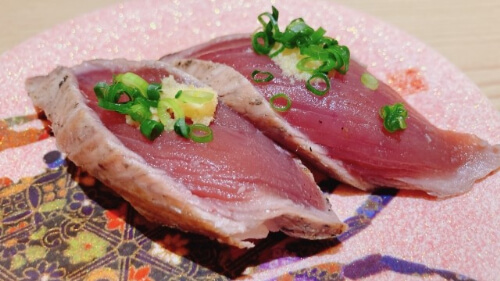
Engawa – flounder Fin
Sliced from the fin muscle of flounder or halibut, engawa has a chewy and crunchy texture and subtle sweetness. Prices vary depending on the fish type, ranging from 100 yen to over thousand yen per piece.
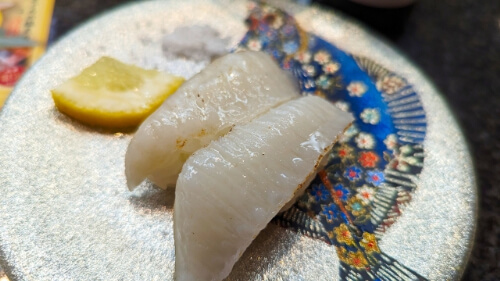
Kanpachi – greater amberja
Similar to hamachi and buri but with a lighter taste and firmer texture. The wild kanpachi is typically available from summer to autumn, but due to aquaculture, kanpachi is now available year-round.
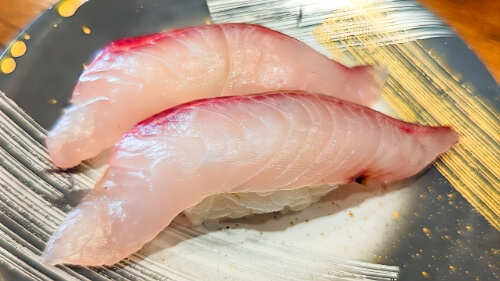
Kani – crab
Kani is popular sushi ingredient during the winter season. Enjoy its tender sweetness and and plump texture, and the rich, creamy flavor of the crab tomalley. It is often served as nigiri sushi as well as a topping for chirashi sushi.
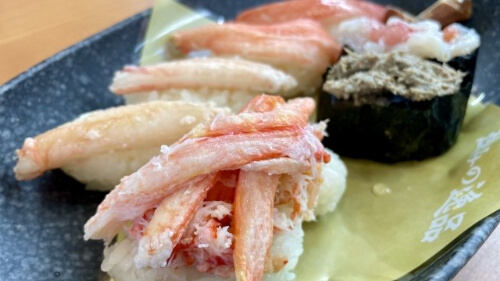
Kohada – gizzard shad
A traditional sushi topping loved for its affordability and flavor, kohada is usually marinated in vinegar to provide a refreshing taste that complements sushi rice well.
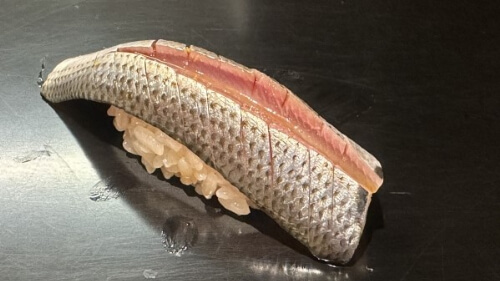
Sanma – pacific saury
Autumn is the season for sanma, known for its fatty, flavorful flesh. However, depending on freshness, it may have a fishy odor. It’s often served with ginger or scallions or marinated in vinegar and served as pressed sushi.
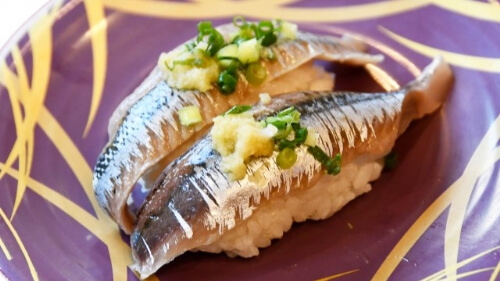
Iwashi – sardine
During summer, iwashi reach their peak season with their fatty and flavorful qualities, which are rich in DHA, making them a healthy choice. It’s advisable to try it at restaurants that offer fresh seafood rather than inexpensive sushi chains.

Akagai – bloody clam
Among the various clam varieties used in sushi, akagai is particularly popular for its subtle astringency and chewy texture, making it a sophisticated choice. It’s a winter delicacy commonly found in many sushi restaurants.
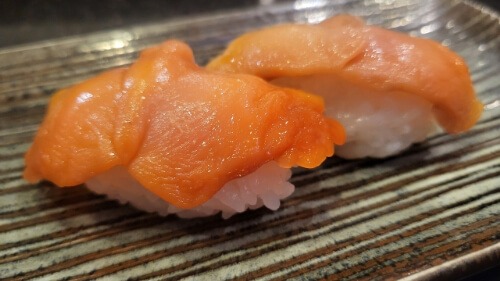
Kazunoko – herring roe
Herring roe marinated in saltwater or soy souce, offering a soft crunchy texture. Considered a luxury ingredient, you may not find it in budget restaurants.

Shime Saba – marinated mackerel
Sushi made with marinated mackerel in vinegar. Saba has a distinctive smell and is prone to spoilage, so it’s often prepared this way. Some people find it challenging to eat due to its strong taste.
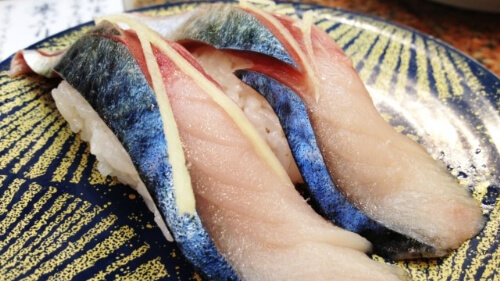
Awabi – abalone
Awabi is a high-end ingredient in Japan, often offered at market price in fancy restaurants. While fresh abalone can be enjoyed raw, its strong ocean flavor might not suit everyone’s palate, making grilled or steamed preparations preferable for those unaccustomed to raw seafood.
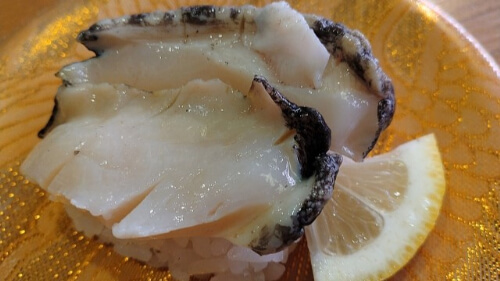
Nodoguro – blackthroat seaperch
Nodoguro is considered a premium fish. Often served with its seared skin, it offers a delightful combination of crispiness and umami richness. While not commonly found at restaurants in Tokyo, it’s a regular menu on the Japan Sea side, priced around 500 yen per piece at inexpensive sushi restaurants.
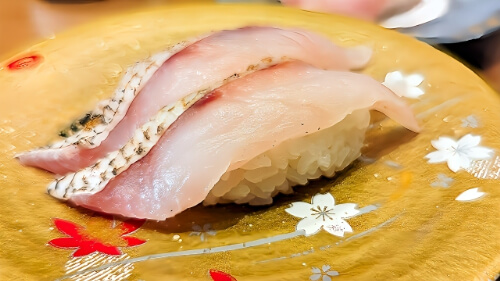
Side Dishes at Sushi Restaurant
When enjoying sushi, don’t forget about the enticing side dishes commonly found at sushi restaurants. Here are some classic side dishes you might encounter:
Misoshiru – miso soup
A standard menu at sushi restaurants, miso soup features ingredients like clams, seaweed, or fish scraps, allowing you to savor the essence of seafood.
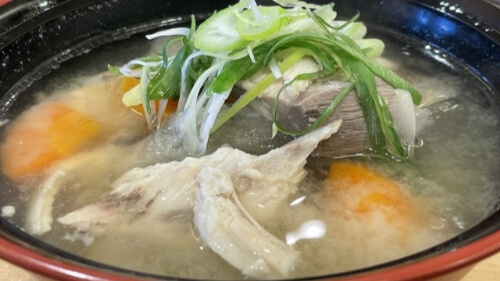
Chawanmushi
A savory egg custard steamed with dashi broth, often containing shrimp or scallops and some vegetables. It’s prized for its silky texture and delicate flavors, typically priced around 200 to 300 yen at inexpensive restaurants.
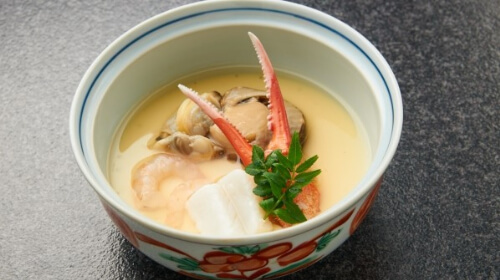
Tempura
Sushi restaurants often serve freshly deep-fried tempura made from seafood like shrimp, squid, or anago (eel), either as individual dishes or as toppings for sushi.
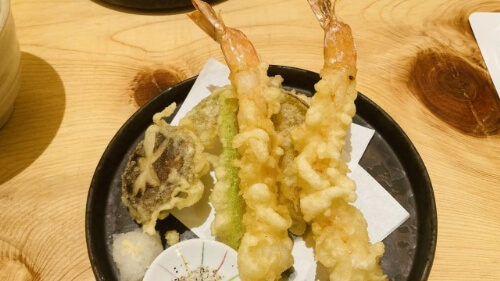
You’re now a sushi master! Explore various types of sushi and side dishes to discover your favorites!
